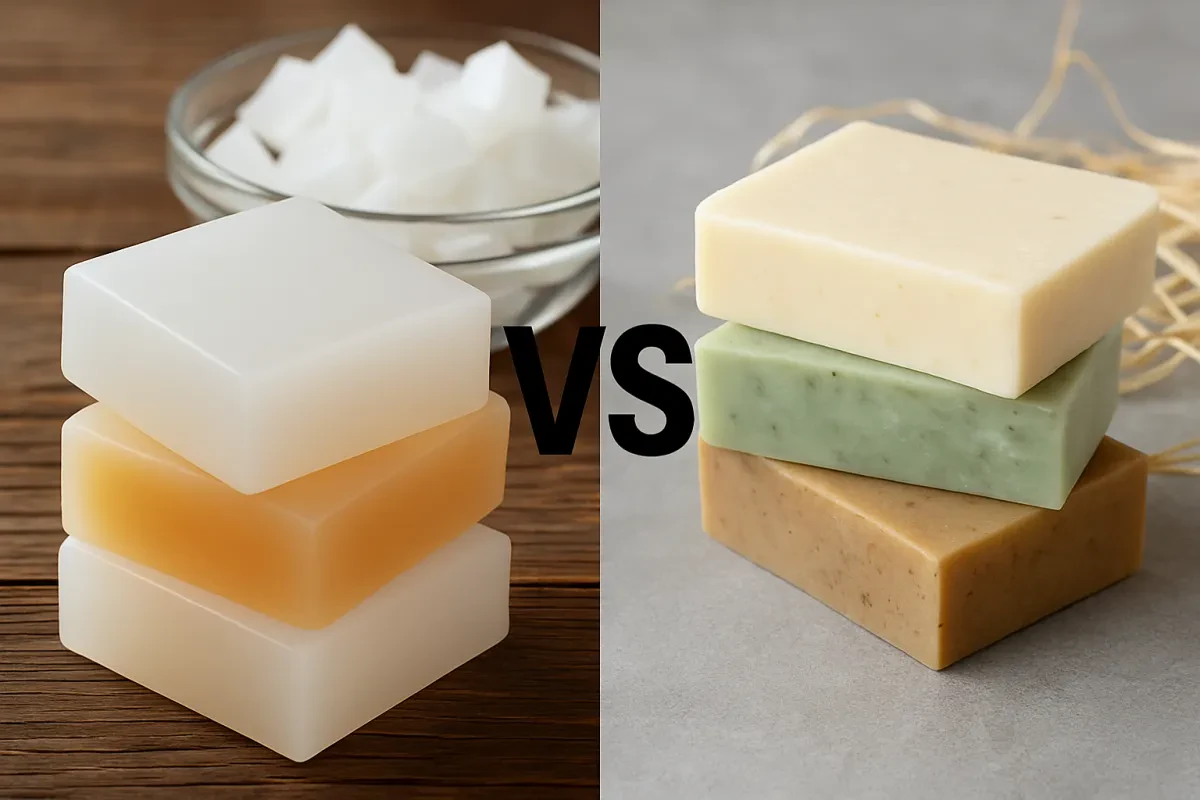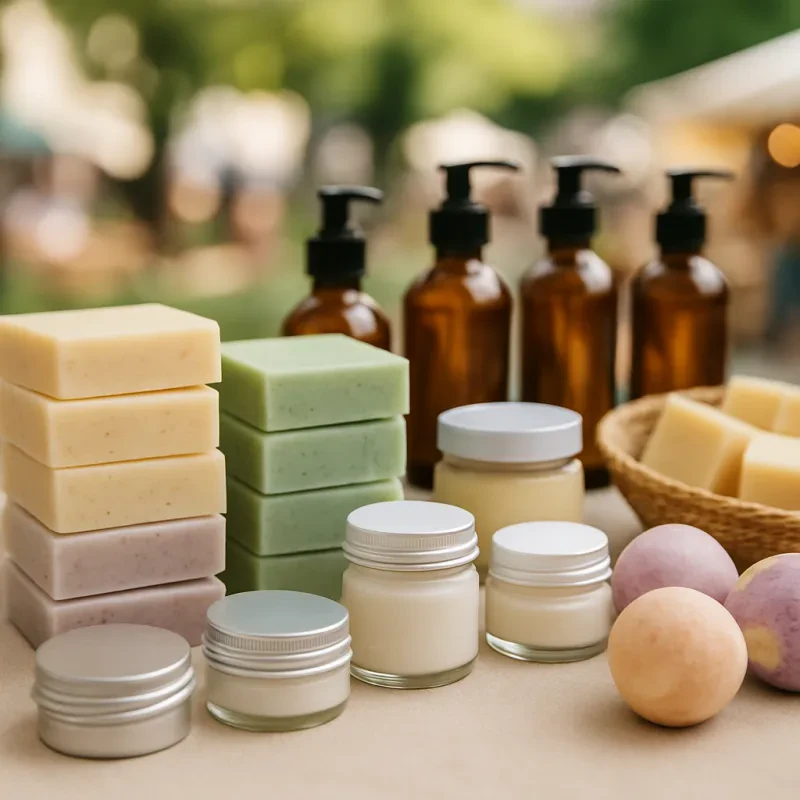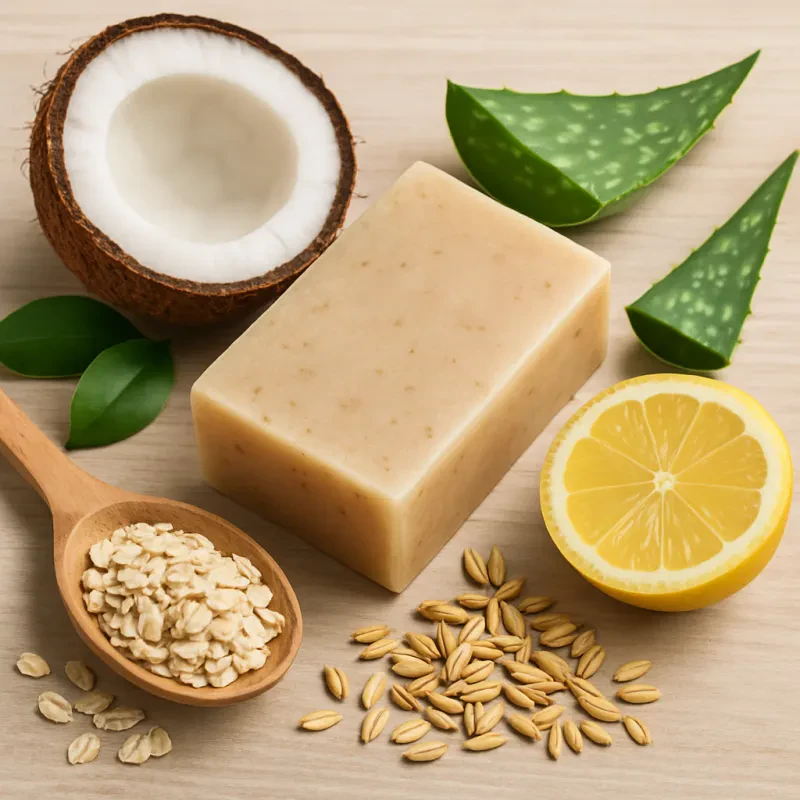Soap making is an art, a science, and for many, a fun and rewarding hobby. But if you're new to the world of handmade soaps, it can be a bit overwhelming when trying to decide between different soap-making methods. Two of the most popular techniques are melt and pour and cold process soap making. While both yield beautiful, custom soaps, the methods, ingredients, and the final product can be quite different.
In this article, we’ll dive into the key differences between melt and pour soap and cold process soap, helping you choose which method is right for your soap-making journey.
What is Melt and Pour Soap?
Melt and pour soap is one of the simplest and safest ways to make soap. As the name suggests, this technique involves melting a pre-made soap base, customizing it with colors, fragrances, and other additives, and then pouring it into a mold to set.
Key Characteristics of Melt and Pour Soap:
- Pre-made Soap Base: Melt and pour soap uses a pre-made soap base, which is typically made from glycerin, shea butter, goat’s milk, or other moisturizing ingredients. This base has already gone through the saponification process (the chemical reaction that turns oils into soap), so you don't need to handle lye.
- Quick Process: Once you melt the soap, it only takes 1–3 hours for it to solidify in the mold. The soap is ready to use almost immediately after hardening.
- Customizable: You can add various colorants, fragrances, exfoliants, and even botanicals to create unique soaps. Because the soap base is already neutral, it's perfect for experimenting with different ingredients.
- No Lye: Since the soap base is pre-made, you avoid dealing with lye, making it a safer option for beginners.
Pros of Melt and Pour Soap:
- Quick and Easy: You can make soap in just a couple of hours, with minimal preparation.
- Safe for Beginners: No need to handle lye, which can be caustic and dangerous.
- Highly Customizable: Add your own colors, fragrances, exfoliants, and even shaped molds for fun creations.
- No Curing Time: Once your soap has solidified, it’s ready to use.
Cons of Melt and Pour Soap:
- Limited Control Over Ingredients: While you can customize the soap with additives, you're limited to the ingredients already present in the soap base.
- Less Natural: Many melt and pour bases are made with synthetic ingredients, so if you're aiming for an all-natural product, this might not be the method for you.
- Texture: Melt and pour soap tends to have a softer, more jelly-like texture compared to cold process soap.
What is Cold Process Soap?
Cold process soap is a more traditional method of soap making, involving mixing oils, water, and lye (sodium hydroxide) together to create soap. The mixture goes through a chemical reaction called saponification, where the oils and lye combine to form soap and glycerin.
Key Characteristics of Cold Process Soap:
- Handling Lye: Cold process soap requires handling lye, which is an alkaline substance that must be treated with care. It's important to wear gloves, goggles, and work in a well-ventilated area when making cold process soap.
- Longer Process: The saponification process can take several hours to complete. After mixing the ingredients and pouring the soap into molds, the soap must cure for 4–6 weeks to allow excess water to evaporate and harden the soap.
- Fully Customizable: With cold process, you start from scratch and can choose your oils, fragrances, colors, and additives. This allows for full control over the final product.
- Natural: Cold process soap is typically made with natural oils like olive oil, coconut oil, or palm oil, and it produces soap with a creamy lather and skin-nourishing properties.
Pros of Cold Process Soap:
- Full Control Over Ingredients: You can select the oils and additives that suit your skin type, resulting in a more personalized soap.
- Natural: Cold process soap tends to use natural ingredients and is more suitable for people looking for an eco-friendly, chemical-free product.
- Longer-Lasting: Cold process soaps are harder and longer-lasting than melt and pour soaps. Once cured, they create a firmer bar that can last longer in the shower.
- Rich Lather: The saponification process results in a soap that creates a luxurious, creamy lather.
Cons of Cold Process Soap:
- Longer Process: It can take several hours to mix and pour, followed by 4–6 weeks of curing time before the soap is ready to use.
- Requires Lye: Handling lye can be intimidating and requires proper safety precautions.
- More Time-Intensive: The overall process takes longer, from mixing and curing to cutting and drying.
- Less Immediate Gratification: Since cold process soap requires curing, you can’t use it right away.
Key Differences Between Melt and Pour and Cold Process Soap
| Aspect | Melt and Pour Soap | Cold Process Soap |
|---|---|---|
| Ease of Use | Simple and beginner-friendly. No lye involved. | Requires more skill and experience. Lye is involved. |
| Time Required | Quick—ready in hours. | Long process—requires 4–6 weeks to cure. |
| Customization | Can add color, fragrance, and exfoliants, but base is fixed. | Full control over ingredients and formulation. |
| Ingredients | Uses pre-made soap bases, often with synthetic additives. | Uses natural oils, but must handle lye. |
| Skin Benefits | Generally moisturizing but may have fewer skin benefits. | Highly customizable for specific skin needs (moisturizing, anti-aging, etc.). |
| Lather | Softer lather, more jelly-like texture. | Rich, creamy lather with long-lasting bars. |
| Safety | Safe for beginners—no lye involved. | Requires caution with lye; safety gear is essential. |
| Final Product Texture | Softer, more translucent soap. | Harder, opaque soap bars. |
Which One Should You Choose?
Choosing between melt and pour and cold process soap depends largely on your personal preferences, skill level, and what you're hoping to achieve with your soaps.
-
Melt and Pour Soap is perfect if:
- You’re a beginner and want a quick, easy, and safe method.
- You’re interested in experimenting with colors, fragrances, and additives without starting from scratch.
- You want to create soaps that can be used immediately.
- You're short on time and looking for a simple, rewarding craft.
-
Cold Process Soap is ideal if:
- You’re willing to invest time and effort into learning the craft.
- You prefer using all-natural ingredients and want full control over the soap-making process.
- You enjoy the process of curing and aging soap for a more luxurious, long-lasting product.
- You’re after a more traditional, handcrafted feel with a rich, creamy lather.
Ultimately, both methods produce beautiful, custom soaps with their own unique qualities. Whether you're making soap for yourself or as gifts, both techniques offer ample room for creativity and personalization. Choose the method that best suits your needs, and enjoy the process of crafting your very own handmade soaps!



